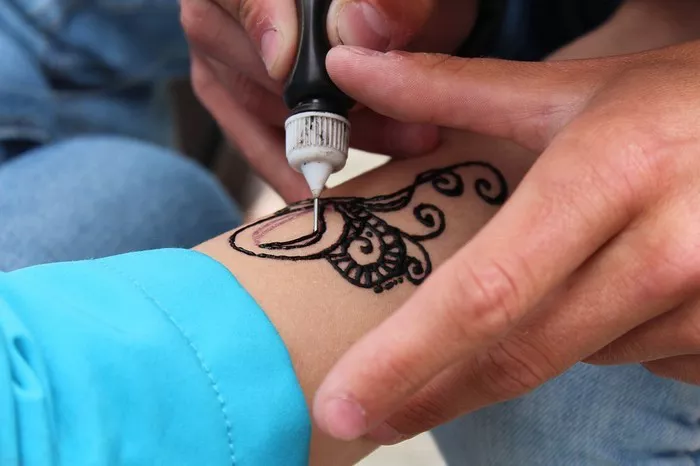Tattoos, once a symbol of permanence, have become increasingly common. However, as tastes change and life circumstances evolve, many individuals seek tattoo removal. While the process has advanced significantly in recent years, the question of pain remains a significant concern for those considering tattoo removal. In this comprehensive guide, we delve into the intricacies of tattoo removal pain, exploring its factors, methods, and strategies for pain management.
Tattoo Removal Pain
Tattoo removal involves breaking down the ink particles embedded within the skin. This process, whether through laser treatments, surgical excision, or other methods, inevitably causes discomfort. Understanding the nature of this pain is crucial for individuals contemplating tattoo removal.
Factors Influencing Pain Perception
Various factors influence the perception of pain during tattoo removal:
Location of the Tattoo: Sensitivity varies across different areas of the body. Tattoos located on bony areas or areas with thinner skin tend to be more painful to remove.
Size and Complexity of the Tattoo: Larger or more intricate tattoos typically require more sessions for complete removal, prolonging the discomfort.
Skin Type and Color: Different skin types and colors can affect the response to tattoo removal procedures. Darker skin tones may be more prone to pigmentation changes, while lighter skin tones may experience more noticeable scarring.
Individual Pain Threshold: Each person’s pain tolerance varies, influencing their experience during tattoo removal.
Methods of Tattoo Removal
Several methods are used for tattoo removal, each with its own associated level of pain:
Laser Tattoo Removal: This is the most common method, involving the use of high-intensity laser beams to break down the ink particles. While effective, laser removal can be quite painful, often described as akin to being snapped by a rubber band or splattered with hot grease.
Surgical Excision: In this method, the tattooed skin is surgically removed and the remaining skin is stitched together. While effective for small tattoos, surgical excision can be more painful and may result in scarring.
Dermabrasion: This technique involves the mechanical removal of the top layers of skin, effectively erasing the tattoo. Dermabrasion can be painful and often requires multiple sessions for complete removal.
Chemical Peels: Chemical agents are applied to the skin to break down the ink particles. While less painful than other methods, chemical peels may not be as effective for all types of tattoos.
Managing Pain During Tattoo Removal
While tattoo removal is inherently uncomfortable, there are several strategies for managing pain:
Topical Anesthetics: Creams or gels containing lidocaine or other numbing agents can be applied to the skin prior to the procedure to reduce discomfort.
Cooling Devices: Some clinics use cooling devices to numb the skin before and during the procedure, helping to alleviate pain.
Pain Medication: Over-the-counter pain relievers such as ibuprofen or acetaminophen can help manage pain after the procedure.
Distraction Techniques: Engaging in activities such as deep breathing, listening to music, or focusing on a specific point in the room can help distract from the discomfort during tattoo removal.
Preparation and Mindset: Mental preparation and a positive mindset can significantly impact the experience of pain during tattoo removal. Understanding the process and setting realistic expectations can help reduce anxiety and discomfort.
Post-Procedure Pain Management
After tattoo removal, it’s essential to follow proper care instructions to minimize discomfort and promote healing:
Keep the Area Clean and Moisturized: Proper wound care is crucial for preventing infection and minimizing pain. Clean the treated area gently with mild soap and water, and apply a soothing moisturizer or ointment as recommended by your provider.
Avoid Sun Exposure: Protect the treated area from sun exposure, as sunburn can exacerbate pain and prolong healing.
Follow-Up Care: Attend all follow-up appointments with your provider to monitor healing progress and address any concerns or complications.
Long-Term Effects and Considerations
While tattoo removal can be effective, it’s important to consider the potential long-term effects:
Scarring: Some degree of scarring is common after tattoo removal, particularly with surgical methods. Proper wound care and scar management techniques can help minimize scarring.
Pigment Changes: Changes in skin pigmentation, including hypopigmentation or hyperpigmentation, may occur after tattoo removal, particularly in individuals with darker skin tones.
Emotional Impact: Tattoo removal can have emotional implications, particularly if the tattoo holds significant personal meaning. It’s essential to address any feelings of loss or regret and seek support if needed.
Conclusion
Tattoo removal is a multi-faceted process that involves both physical and emotional considerations. While pain is an inevitable aspect of tattoo removal, advancements in technology and pain management techniques have made the process more tolerable. By understanding the factors influencing pain perception, exploring different removal methods, and implementing effective pain management strategies, individuals can undergo tattoo removal with greater comfort and confidence. As always, it’s crucial to consult with a qualified provider to discuss individual concerns and develop a personalized treatment plan.

